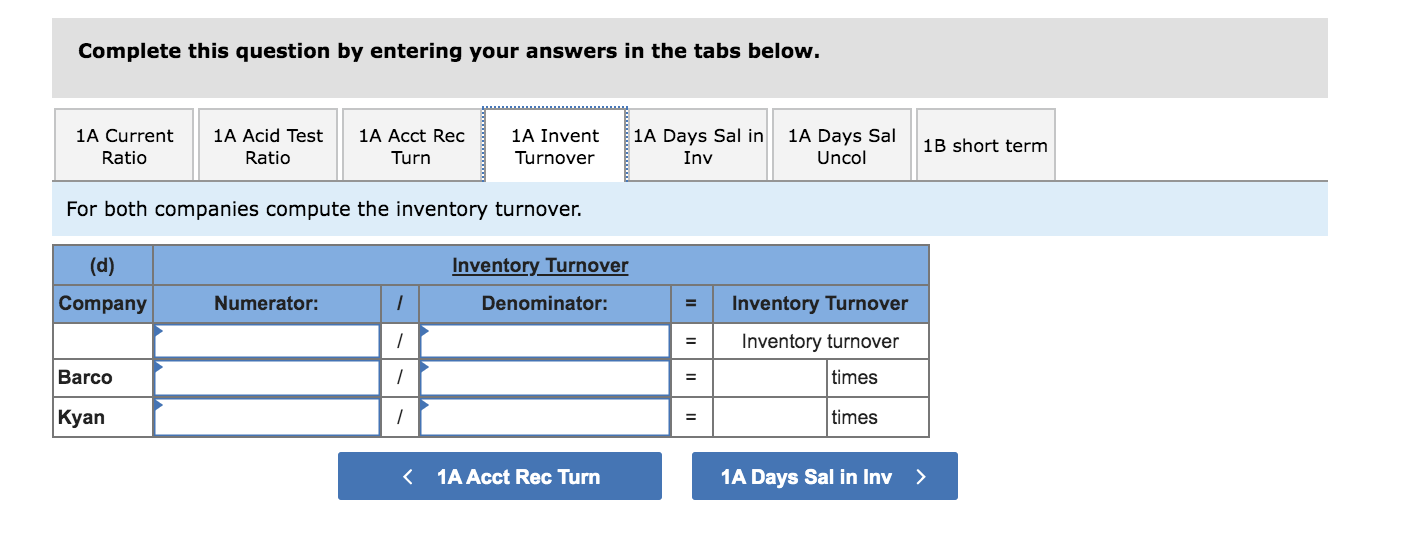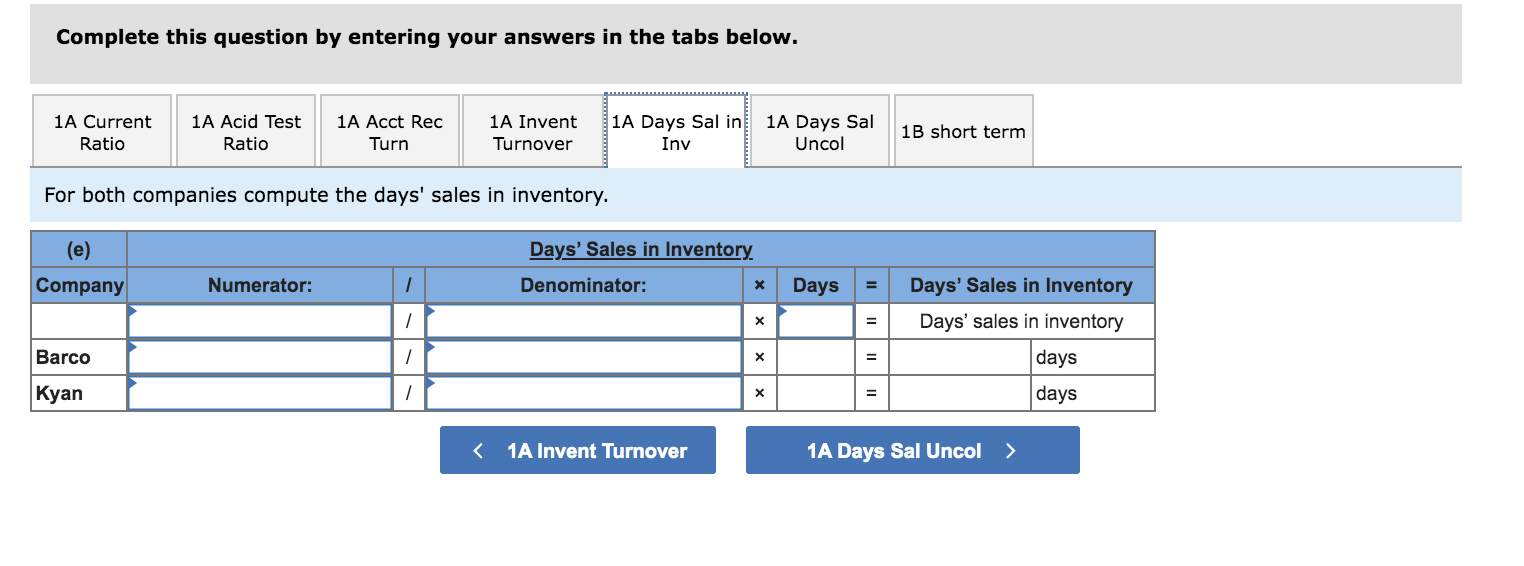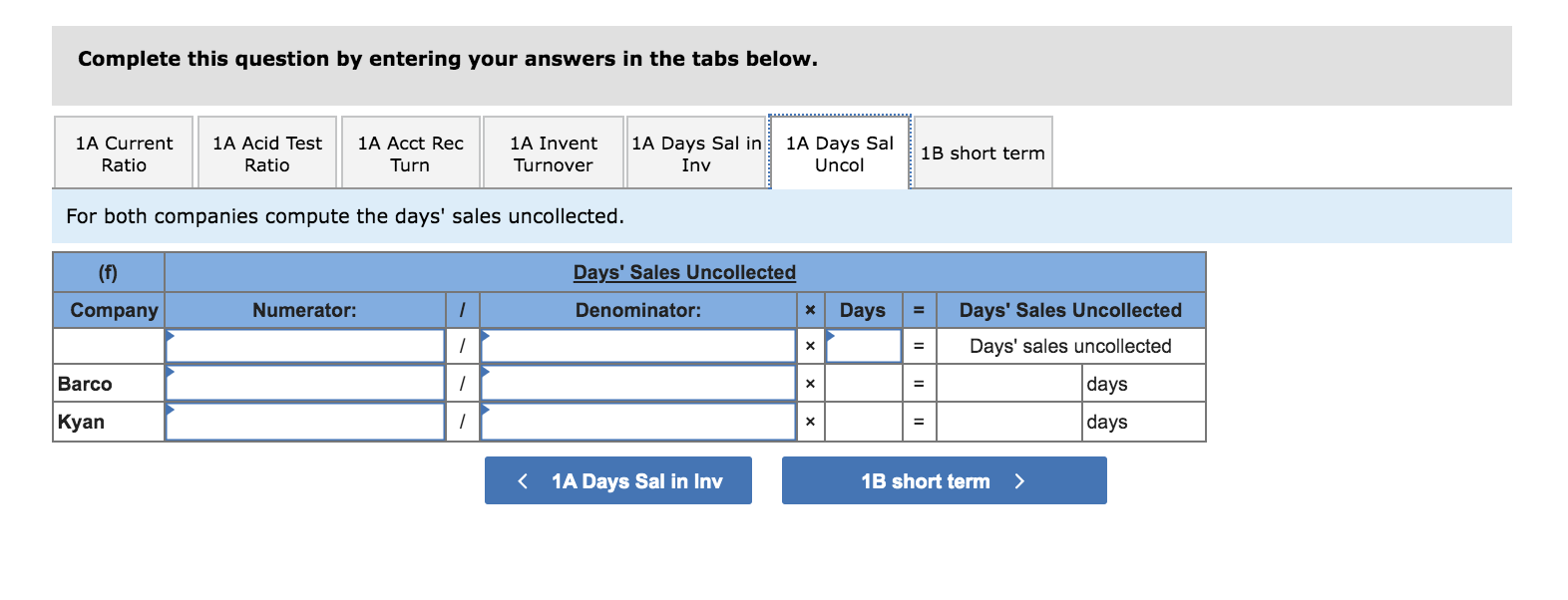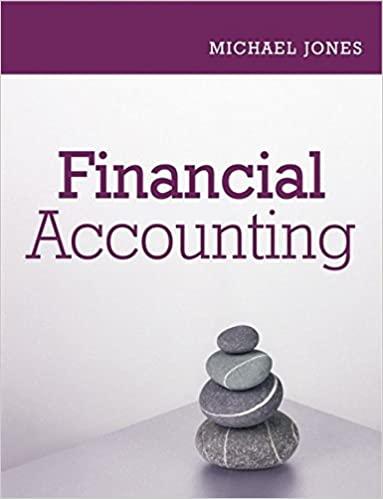Answered step by step
Verified Expert Solution
Question
1 Approved Answer
Summary information from the financial statements of two companies competing in the same industry follows. Barco Company Kyan Company Barco Company Kyan Company Data from
Summary information from the financial statements of two companies competing in the same industry follows.
| Barco Company | Kyan Company | Barco Company | Kyan Company | ||
| Data from the current year-end balance sheets | Data from the current years income statement | ||||
| Assets | Sales | $ 810,000 | $ 895,200 | ||
| Cash | $ 22,500 | $ 34,000 | Cost of goods sold | 595,100 | 634,500 |
| Accounts receivable, net | 37,400 | 50,400 | Interest expense | 7,800 | 18,000 |
| Merchandise inventory | 84,340 | 132,500 | Income tax expense | 15,569 | 24,714 |
| Prepaid expenses | 5,300 | 7,800 | Net income | 191,531 | 217,986 |
| Plant assets, net | 340,000 | 310,400 | Basic earnings per share | 4.56 | 5.05 |
| Total assets | $ 489,540 | $ 535,100 | Cash dividends per share | 3.78 | 3.95 |
| Liabilities and Equity | Beginning-of-year balance sheet data | ||||
| Current liabilities | $ 63,340 | $ 100,300 | Accounts receivable, net | $ 30,800 | $ 57,200 |
| Long-term notes payable | 81,800 | 111,000 | Merchandise inventory | 55,600 | 113,400 |
| Common stock, $5 par value | 210,000 | 216,000 | Total assets | 428,000 | 412,500 |
| Retained earnings | 134,400 | 107,800 | Common stock, $5 par value | 210,000 | 216,000 |
| Total liabilities and equity | $ 489,540 | $ 535,100 | Retained earnings | 101,629 | 60,454 |
Required: 1a. For both companies compute the (a) current ratio, (b) acid-test ratio, (c) accounts receivable turnover, (d) inventory turnover, (e) days sales in inventory, and (f) days sales uncollected. (Do not round intermediate calculations.) 1b. Identify the company you consider to be the better short-term credit risk.







Required information [The following information applies to the questions displayed below.) Summary information from the financial statements of two companies competing in the same industry follows. Barco Company Kyan Company Barco Company Kyan Company Data from the current year-end balance sheets Assets Cash Accounts receivable, net Merchandise inventory Prepaid expenses Plant assets, net Total assets Liabilities and Equity Current liabilities Long-term notes payable Common stock, $5 par value Retained earnings Total liabilities and equity $ 22,500 $ 34,000 37,400 50,400 84,340 132,500 5,300 7,800 340,000 310,400 $ 489,540 $ 535, 100 Data from the current year's income statement Sales Cost of goods sold Interest expense Income tax expense Net income Basic earnings per share Cash dividends per share Beginning-of-year balance sheet data Accounts receivable, net Merchandise inventory Total assets Common stock, $5 par value Retained earnings $ 810,000 595, 100 7,800 15,569 191,531 4.56 3.78 $ 895, 200 634,500 18,000 24,714 217,986 5.05 3.95 $ 63, 340 $ 100,300 81,800 111,000 210,000 216,000 134,400 107,800 $ 489,540 $ 535, 100 $ 30,800 55,600 428,000 210,000 101,629 $ 57,200 113,400 412,500 216,000 60, 454 Required: 1a. For both companies compute the (a) current ratio, (b) acid-test ratio, (c) accounts receivable turnover, (d) inventory turnover, (e) days' sales in inventory, and (1 days' sales uncollected. (Do not round intermediate calculations.) 1b. Identify the company you consider to be the better short-term credit risk. Complete this question by entering your answers in the tabs below. 1A Current Ratio 1A Acid Test Ratio 1A Acct Rec Turn 1A Invent Turnover 1A Days Sal in 1A Days Sal Inv Uncol 1B short term For both companies compute the current ratio. (a) Current Ratio Denominator: Company Numerator: / = Current Ratio Current ratio to 1 Barco 1 Kyan = to 1 Complete this question by entering your answers in the tabs below. 1A Current Ratio 1A Acid Test Ratio 1A Acct Rec Turn 1A Invent Turnover 1A Days Sal in Inv 1A Days Sal Uncol 1 B short term For both companies compute the acid-test ratio. Acid-Test Ratio (b) Company Numerator: Denominator: = Acid-Test Ratio Acid-test ratio + / Barco + +++ + + + / = to 1 Kyan + 1 to 1 Complete this question by entering your answers in the tabs below. 1A Current Ratio 1A Acid Test Ratio 1A Acct Rec Turn 1A Invent Turnover 1A Days Sal in Iny 1A Days Sal Uncol 1B short term For both companies compute the inventory turnover. (d) Inventory Turnover Company Numerator: 1 Denominator: = Inventory Turnover Inventory turnover 1 Barco / = times Kyan / times Complete this question by entering your answers in the tabs below. 1A Current Ratio 1A Acid Test Ratio 1A Acct Rec Turn 1A Invent Turnover 1A Days Sal in Inv 1A Days Sal Uncol 1B short term For both companies compute the days' sales in inventory. (e) Days' Sales in Inventory Company Numerator: / Denominator: X Days / = Days' Sales in Inventory Days' sales in inventory days Barco 1 = x x Kyan 1 = days Complete this question by entering your answers in the tabs below. 1A Current Ratio 1A Acid Test Ratio 1A Acct Rec Turn 1A Invent Turnover 1A Days Sal in Inv 1A Days Sal Uncol 1B short term For both companies compute the days' sales uncollected. (6) Days' Sales Uncollected Company Numerator: 1 Denominator: X Days = Days' Sales Uncollected Days' sales uncollected / = Barco 1 x x x days Kyan / = days Complete this question by entering your answers in the tabs below. 1A Current Ratio 1A Acid Test Ratio 1A Acct Rec Turn 1A Invent Turnover 1A Days Sal in Inv 1A Days Sal Uncol 1 B short term Identify the company you consider to be the better short-term credit risk. Better short-term credit risk
Step by Step Solution
There are 3 Steps involved in it
Step: 1

Get Instant Access to Expert-Tailored Solutions
See step-by-step solutions with expert insights and AI powered tools for academic success
Step: 2

Step: 3

Ace Your Homework with AI
Get the answers you need in no time with our AI-driven, step-by-step assistance
Get Started


